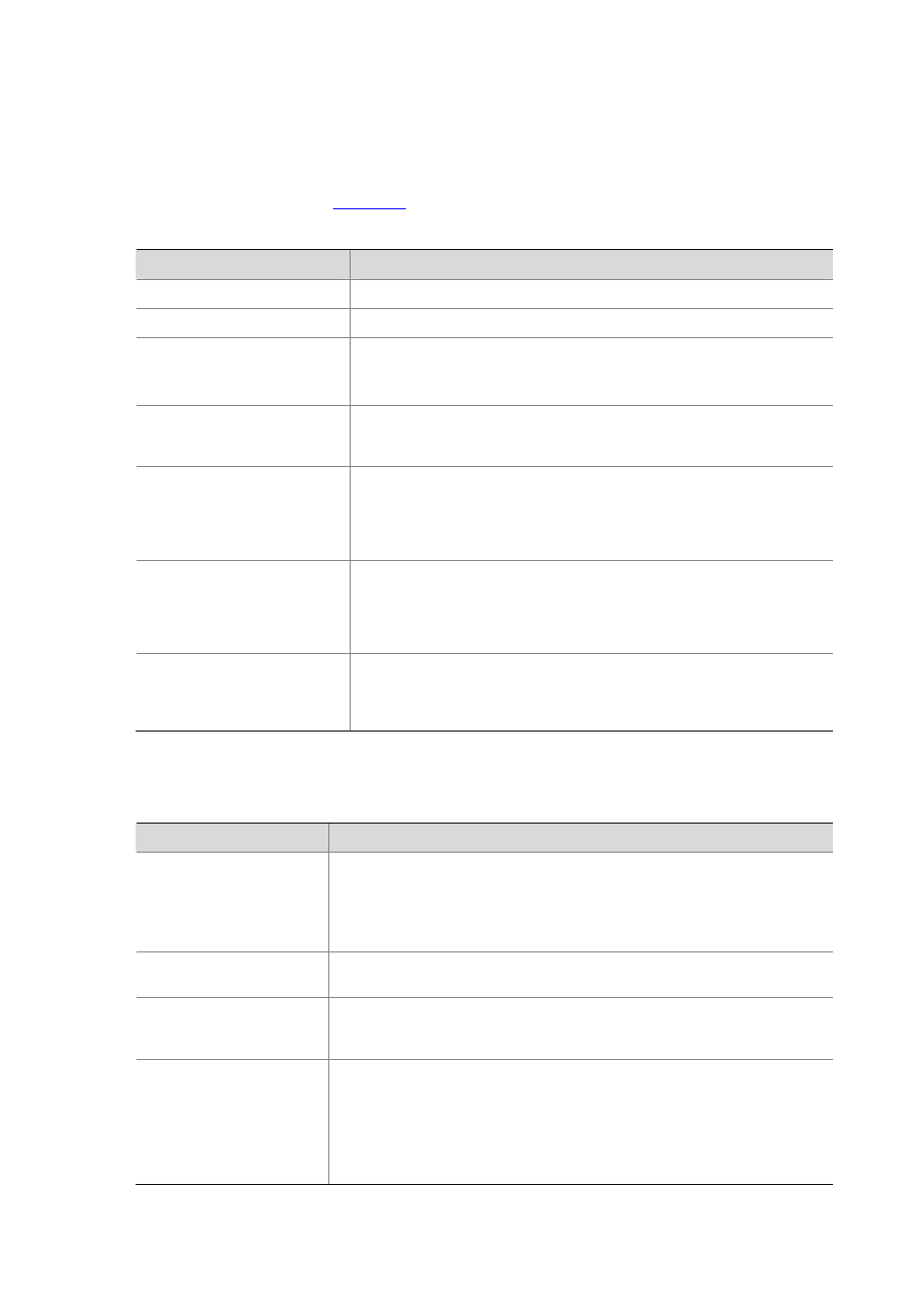Dldp fundamentals, Dldp link states, Dldp timers – H3C Technologies H3C WX6000 Series Access Controllers User Manual
Page 295

27-3
DLDP Fundamentals
DLDP link states
A device is in one of these DLDP link states: Initial, Inactive, Active, Advertisement, Probe, Disable, and
DelayDown, as described in
.
Table 27-1
DLDP link states
State
Description
Initial
This state indicates that DLDP is not enabled.
Inactive
This state indicates that DLDP is enabled but the link is down.
Active
This state indicates that:
z
DLDP is enabled and the link is up.
z
The neighbor entries are cleared.
Advertisement
This state indicates that a device can communicate normally with all its
neighbors in both directions or DLDP remains in active state for more than
five seconds. It is the normal state where no unidirectional link is detected.
Probe
A device enters this state if it receives a packet from an unknown neighbor.
In this state, DLDP sends packets to check whether the link is a
unidirectional link. After a device enters this state, the probe sending timer is
triggered, and an echo waiting timer is triggered for each neighbor to be
detected.
Disable
A device enters this state when:
z
A unidirectional link is detected.
z
The contact with a neighbor in enhanced mode gets lost.
In this state, no DLDP packet is sent or accepted.
DelayDown
A device in the Active, Advertisement, or Probe DLDP link state transits to
this state rather than remove the corresponding neighbor entry and transits
to the Inactive state when it detects a port-down event. When a device
transits to this state, the DelayDown timer is triggered.
DLDP timers
Table 27-2
DLDP timers
DLDP timer
Description
Active timer
Determines the Interval to send Advertisement packets with RSY tag, which
defaults to 1 second.
When a device transits to the active DLDP link state, it sends Advertisement
packets with RSY tag according to this timer. The maximum number of this type
of packets that can be sent successively is 5.
Advertisement timer
Determines the interval to send advertisement packets, which defaults to 5
seconds.
Probe timer
Determines the interval to send Probe packets, which defaults to 0.5 seconds.
The maximum number of this type of packets that can be sent successively is
10.
Echo timer
This timer is set to 10 seconds and is triggered when a device transits to the
Probe state or an enhanced detect is launched. When the Echo waiting timer
expires and no Echo packet is received from a neighbor device, the link is set as
a unidirectional link and the device transits to the Disable state. In this case, the
device sends Disable packets, prompts the user to shut down the port or shuts
down the port automatically (depending on the DLDP down mode configured),
and removes the corresponding neighbor entries.